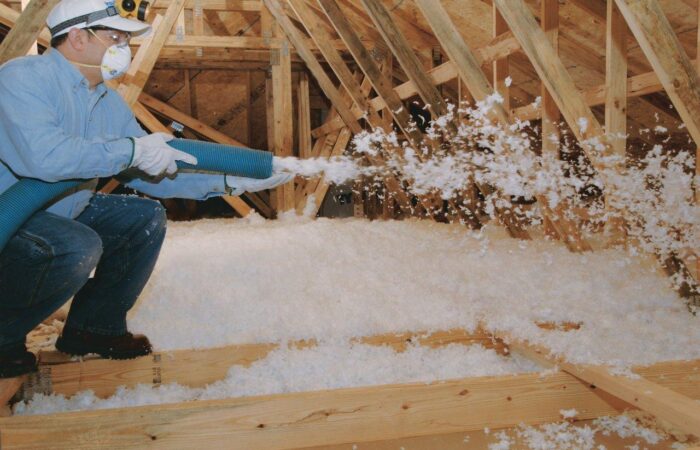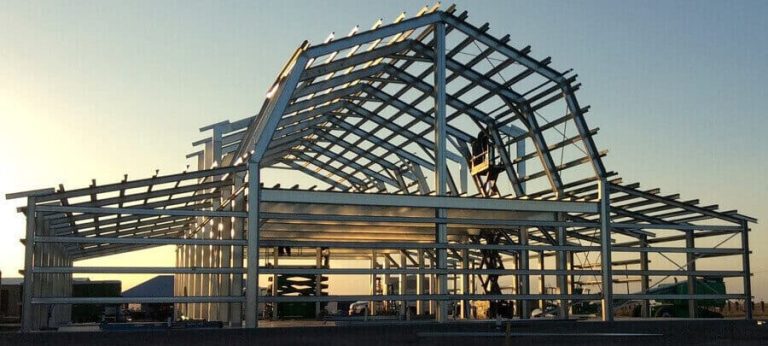WATERPROOFING AND THERMAL INSULATION WORKS
Waterproofing and thermal insulation are two of the most commonly used works in the construction industry. While they are both necessary for different reasons, they are often times confused with each other. In this blog post, we will explore the differences between waterproofing and thermal insulation, their applications, and which one you should use for your next project.
WATERPROOFING AND THERMAL INSULATION WORKS
Waterproofing and thermal insulation are two very important aspects of any construction project. Waterproofing ensures that the structure is protected from water damage, while thermal insulation prevents heat loss or gain. Both of these works must be carried out correctly in order to achieve the desired results.
There are various methods of waterproofing a structure, depending on the material of the construction and the intended use of the building. The most common waterproofing method is to apply a layer of bitumen-based membrane to the surface. This type of membrane is usually applied in two or three layers, with each layer providing additional protection against water infiltration.
Thermal insulation works by preventing heat transfer between the interior and exterior of a building. This is achieved through the use of materials such as foam insulation, fiberglass batting, or spray foam. Thermal insulation is an important consideration in both new construction and retrofit projects.
TRADING BUILDING MATERIALS AND INSULATION
There are many benefits to waterproofing and thermal insulation works. By keeping your building materials and insulation dry, you can avoid damage from moisture, pests, and extreme temperatures. In addition, these works can improve the energy efficiency of your home or office, saving you money on heating and cooling costs.
best Roofing & Insulation Comany in saudi arabia
There are many construction companies in Saudi Arabia that provide roofing and insulation services. However, not all of them are created equal. Some are more experienced and reliable than others. When choosing a roofing and insulation company in Saudi Arabia, it’s important to choose one that has a good reputation and is known for providing quality services.
The best roofing and insulation company in Saudi Arabia is Al-Kifah Roofing & Insulation Company. We have been in business since 1977 and have successfully completed thousands of projects. We are experts in all aspects of roofing and insulation, including waterproofing, thermal insulation, and soundproofing. We use only the highest quality materials and our workmanship is second to none. Our goal is to provide our clients with the best possible service at the most competitive prices. Contact us today for a free consultation.
best Roofing & Insulation Comany in riyadh
If you are in Riyadh and looking for the best roofing and insulation company, then you have come to the right place. We are experts in all aspects of roofing and insulation, and we can provide you with the best possible service at the most competitive prices.
We have a team of highly experienced and qualified professionals who are dedicated to providing the best possible service to our customers. We use only the latest equipment and techniques to ensure that your roofing and insulation needs are met in the most efficient and effective way possible.
We understand the importance of keeping your home or office in good condition, and we strive to provide you with the best possible service at all times. We offer a wide range of services that includes water proofing, thermal insulation, soundproofing, etc. We also offer a wide range of products that can help you save money on your energy bills.
So if you are looking for the best roofing and insulation company in Riyadh, then contact us today to discuss your requirements. We would be more than happy to provide you with a free quotation
best Roofing & Insulation Comany in dammam
There are many factors to consider when choosing a roofing and insulation company in Dammam. The most important factor is the quality of the products and services they provide. There are many companies that claim to be the best, but not all of them can live up to that claim.
It is important to do some research before selecting a company. Make sure to read online reviews and talk to others who have used the services of the company you are considering. This will help you get a better idea of what to expect from their services.
Once you have narrowed down your choices, it is time to request quotes from each of the companies you are considering. Be sure to compare the prices and services offered by each company. This will help you choose the best roofing and insulation company in Dammam for your needs.
best Roofing & Insulation Comany in khobar
There are many companies that provide roofing and insulation services in Khobar, but not all of them are created equal. When it comes to finding the best company for your needs, there are a few things you should keep in mind.
First, you want to find a company that has a good reputation. Ask around town or look online for reviews of different companies. See what others have said about their experience with the company you’re considering.
Second, you want to make sure the company you choose has experience with the type of work you need done. If you need thermal insulation, for example, make sure the company has experience installing it. Otherwise, they may not know how to properly install it, which could lead to problems down the road.
Third, you want to find a company that offers competitive prices. Get quotes from several different companies before making your final decision. This will help you ensure you’re getting the best value for your money.
fourth and final point is customer service ,It’s important to find a company that offers good customer service .You want to be able to get in touch with someone easily if there are any problems with the workmanship or materials .A good company will stand behind their work and make things right if there are any issues .
When it comes to finding the best roofing and insulation company in Khobar ,keep these things in mind and you’ll be sure to find a great one that meets all of your needs
Roofing & Insulation projects
Waterproofing and thermal insulation are two different, but equally important, aspects of any construction project. Waterproofing ensures that your building is protected from water damage, while thermal insulation helps to keep your building cool in the summer and warm in the winter.
There are a variety of different waterproofing and thermal insulation materials available on the market today, so it’s important to do your research and choose the products that are right for your particular project.
When it comes to roofing and insulation projects, there are a few things to keep in mind in order to ensure a successful outcome. First, make sure that you hire a reputable contractor who has experience with these types of projects. Second, be sure to follow all manufacturer’s instructions carefully. And finally, be sure to have a realistic budget in mind before you begin any work.
With proper planning and execution, your roofing and insulation project will be a success!
Roofing & Insulation types
There are many different types of roofing and insulation that can be used in waterproofing and thermal insulation works. The most common type of roofing is asphalt shingles, which are made of a fiberglass mat core covered with asphalt and mineral granules. Asphalt shingles are available in a variety of colors and styles, making them a popular choice for homeowners. Another popular type of roofing is metal roofing, which is available in both panels and shingles. Metal roofing is durable and long lasting, but can be more expensive than other types of roofing. Tile roofs are also popular, and come in a variety of colors and styles. Tile roofs are durable, but can be more expensive than other types of roofing.
There are also many different types of insulation that can be used in waterproofing and thermal insulation works. Fiberglass insulation is the most common type of insulation, and is made from glass fibers that are spun into a mat. Fiberglass insulation is available in various thicknesses, so it can be used in different applications. Another type of insulation is cellulose insulation, which is made from recycled paper products. Cellulose insulation is often treated with chemicals to resist fire, mold, and insects. Foam board insulation is another option, and is made from rigid polystyrene or polyurethane foam. Foam board insulation comes in different thicknesses, so it can be used in different applications as well.
Industrial Thermal Insulation
Industrial thermal insulation is the process of protecting a structure or system from heat loss or gain. Thermal insulation can be achieved through a variety of methods, including the use of materials like foam, fiberglass, and cellulose. When selecting an insulation material, it is important to consider the R-value, or thermal resistance, of the material. The higher the R-value, the more effective the insulation will be.
There are many benefits to industrial thermal insulation, including energy savings, improved comfort levels, and reduced noise pollution. Industrial thermal insulation can also help to extend the life of equipment by preventing premature degradation from heat exposure.
Industrial Thermal Insulation company is saudi arabia
Industrial Thermal Insulation company is saudi arabia’s leading provider of thermal insulation solutions. We offer a wide range of products and services to suit your needs, including:
– Thermal Insulation for Industrial Buildings
– Thermal Insulation for Storage Tanks
– Thermal Insulation for Pipelines
– Thermal Insulation for Equipment
– Customised Thermal Insulation Solutions
We have a team of experienced professionals who are dedicated to providing the best possible service and products to our clients. Contact us today to discuss your thermal insulation requirements.
Industrial Thermal Insulation company in dammam
Dammam is the capital of the Eastern Province of Saudi Arabia and the major industrial city in the kingdom. It is also home to the world’s largest oil refinery. The city has a hot desert climate with very high temperatures throughout the year.
There are many industrial thermal insulation companies in Dammam that offer their services to factories and other commercial buildings. These companies use different materials for thermal insulation such as fiberglass, rockwool, polystyrene foam, etc. They also install various types of insulation systems such as rigid board, spray foam, blankets/batts, etc.
Industrial thermal insulation is very important in Dammam because of the high temperatures. It helps to keep factories and other commercial buildings cool and prevents heat from entering these buildings. This reduces the load on air conditioning systems and saves energy.
types of insulation work
There are three main types of insulation work:
1. Thermal insulation works – This type of insulation work is concerned with the prevention of heat loss or gain in a building. It is usually achieved by the installation of insulation materials such as glass wool, rock wool, polystyrene foam or cork boards.
2. Acoustic insulation works – This type of insulation work is concerned with the prevention of sound transmission in a building. It is usually achieved by the installation of sound-proofing materials such as mineral wool, glass fibre or acoustic plasterboard.
3. Waterproofing works – This type of insulation work is concerned with the prevention of water ingress into a building. It is usually achieved by the application of waterproofing membranes or coatings to external walls and roofs, or by the installation of drainage systems around the perimeter of the building.
THERMAL INSULATION SYSTEMS
There are two main types of thermal insulation systems: those that use air as the primary insulating material, and those that use other materials.
Air-based systems are typically less expensive to install and maintain than other types of thermal insulation systems, but they can be less effective in extreme temperatures. In very cold weather, air-based thermal insulation can allow heat to escape from a building, while in very hot weather it can trap heat inside.
Other types of thermal insulation systems include those that use fiberglass, cellulose, rock wool, or foam as their primary insulating material. These systems are usually more expensive to install and maintain than air-based systems, but they are often more effective in extreme temperatures.
Insulation and Building Cladding Materials
There are many different types of insulation and building cladding materials available on the market today. Each type has its own unique benefits and drawbacks, so it is important to choose the right material for your specific needs.
One of the most common insulation materials is fiberglass. Fiberglass is an excellent insulator and can be used in a variety of applications. However, it is also one of the most expensive options.
Another popular type of insulation is cellulose. Cellulose is made from recycled paper products and is very effective at trapping heat. It is also relatively inexpensive and easy to install.
Foam insulation is another option that is growing in popularity. Foam insulation is made from polystyrene or other synthetic materials and can be sprayed into place. It is an excellent insulator and provides a high R-value, but it can be more expensive than other options.
When choosing an insulation material, it is important to consider the climate in which you live. In hot climates, fiberglass or cellulose may be the best choice, while foam insulation may be more appropriate for cold climates. It is also important to consider the level of moisture in your home; some materials are more resistant to moisture than others.
What does it mean to insulate a building?
When most people think of insulation, they think of keeping their homes warm in the winter and cool in the summer. But insulation is also important for keeping your home dry. Waterproofing and thermal insulation works help to keep moisture out of your home and prevent heat loss, respectively.
Waterproofing involves sealing the exterior of your home to prevent water from getting in. This can be done with a variety of materials, including waterproof paint, sealant, or membrane. Thermal insulation works by creating a barrier between the interior and exterior of your home. This helps to keep heat in during the winter and cool air in during the summer.
There are many benefits to insulating your home, including increased comfort, lower energy bills, and improved indoor air quality. If you’re thinking about waterproofing or adding insulation to your home, be sure to talk to a professional about the best options for your needs.
What exactly is insulation?
Insulation is a material that helps to prevent heat from escaping from an area. It is commonly used in homes and buildings in order to keep the interior warm during winter and cool during summer. There are many different types of insulation available on the market, each with their own benefits and drawbacks. Some of the most common types of insulation include fiberglass, cellulose, and foam.
What are the 3 types of insulation?
There are three types of insulation:
1. Reflective insulation: This type of insulation reflects heat back into the space, keeping it cooler in the summer and warmer in the winter.
2. Radiant barrier: A radiant barrier is a layer of material that helps block heat from entering or leaving a space.
3. Mass-loaded vinyl: This type of insulation is made from a heavy duty vinyl that is effective at blocking noise and reducing vibration.
What is thermal insulation in construction?
Thermal insulation is a material that helps prevent heat from escaping or entering a space. It’s used in homes and buildings to keep the temperature inside comfortable and to reduce energy costs.
There are many different types of thermal insulation, but they all work by trapping air or another gas. The trapped air creates a barrier that slows down the transfer of heat. This makes it harder for heat to enter or escape, which keeps the temperature inside the building more stable.
Thermal insulation can be made from a variety of materials, including fiberglass, cellulose, foam, and rubber. It’s often used in conjunction with other materials like weatherstripping and caulking to create an effective barrier against heat loss.
Building Insulation
Building insulation is a process of enclosing a building to protect it from the elements. The most common type of insulation is thermal insulation, which helps to keep the internal temperature of a building stable. Thermal insulation can be made from a variety of materials, including fiberglass, cellulose, and foam. It is important to choose the right type of insulation for your climate and the specific needs of your home or office.
Waterproofing is another type of insulation that is often used in conjunction with thermal insulation. Waterproofing helps to prevent moisture from penetrating the interior of a building, which can cause damage to the structure and lead to mold growth. Waterproofing can be accomplished with a variety of materials, including tar, asphalt, and rubber.
When choosing insulation for your home or office, it is important to consult with a professional contractor who can assess your specific needs and recommend the best type of insulation for your situation.
Insulation – Designing Buildings
Thermal insulation is the most effective way to keep your building warm in winter and cool in summer, while reducing your energy bills. It works by trapping heat inside the building, preventing it from escaping through walls, roofs and windows.
There are many different types of insulation available on the market, so it’s important to choose the right one for your project. Some common types of insulation include:
-Fiberglass Insulation: This is one of the most popular types of insulation, as it’s inexpensive and easy to install. Fiberglass comes in a variety of thicknesses, so you can choose the level of insulation you need.
-Cellulose Insulation: Cellulose is made from recycled newspapers and other materials, making it an environmentally friendly choice. It’s also very effective at trapping heat, making it a good choice for those who want to reduce their energy bills.
-Spray Foam Insulation: Spray foam is a liquid that expands to fill any gaps or voids in your walls or ceilings. It’s great for hard-to-reach areas like attics or crawlspaces, and provides a high level of insulation.
Once you’ve chosen the right type of insulation for your project, the next step is to install it properly. If you’re not sure how to do this yourself, there are plenty of professional contractors who can help.
Thermal Insulation : Definition, Materials & Methods
In order to understand thermal insulation, it is first important to understand heat transfer. Heat transfer is the movement of heat from one place to another. There are three main types of heat transfer: conduction, convection, and radiation.
Conduction is the transfer of heat through solid objects; think of how a metal pot gets hot when placed on a stove. The molecules in the pot vibrate faster as they absorb heat from the stove, and these vibrations are transferred to the molecules around them, causing them to vibrate faster as well. This process continues until the entire pot is hot.
Convection is the transfer of heat through fluids; think of how a pot of boiling water heats up the air around it. The hotter fluid (in this case, water) rises while cooler fluid (in this case, air) sinks. This circulating motion transfers heat from the pot of boiling water to the surrounding air.
Radiation is the transfer of heat through electromagnetic waves; think of how the Sun heats up Earth. Radiation does not require any physical contact between objects in order to transfer heat; instead, it travels through empty space at the speed of light until it hits an object. When radiation hits an object, it can either be absorbed or reflected. If an object absorbs radiation, its molecules will begin to vibrate faster as they gain energy from the absorbed radiation. These vibrations will then be transferred to neighboring molecules and so on until the entire object has heated up.
What are the three types of insulation?
There are three main types of insulation:
1. Thermal Insulation
2. Acoustic Insulation
3. Fire Insulation
Thermal insulation is the most common type of insulation and is used to prevent heat from escaping or entering a building. This can be done through the use of materials like fiberglass, cellulose, and foam. Acoustic insulation is used to reduce noise within a space and is often made from fiberglass or polyurethane foam. Fire insulation is designed to resist fire and is typically made from ceramic fiber or vermiculite.
What are the four types of insulation?
There are four main types of insulation:
1. Fiberglass Insulation: This is the most common type of insulation and is made from recycled glass. It’s available in batts or rolls, and can be used in both new construction and retrofit projects.
2. Mineral Wool Insulation: This type of insulation is made from rock or slag wool and provides excellent acoustic and fire resistance. It’s often used in commercial and industrial applications.
3. Foam Insulation: Foam insulation is available in several different forms, including spray foam, rigid foam board, and poured-in-place insulation. It’s a great choice for energy-efficient construction as it creates an airtight seal that helps reduce heating and cooling costs.
4. Natural Fiber Insulation: This type of insulation is made from natural materials like sheep’s wool, cotton, cellulose, or hemp. It’s environmentally friendly and has excellent thermal and acoustical properties.
What type of insulation is best?
There are three main types of insulation: foam, fiberglass, and cellulose. Each has its own advantages and disadvantages, so it’s important to choose the right type of insulation for your needs.
Foam insulation is made from polyurethane or other chemicals, and it can be sprayed or injected into cracks and crevices. Foam insulation is very effective at sealing off air leaks and keeping out moisture. It’s also great for insulating hard-to-reach areas, like attics and crawl spaces. However, foam insulation is more expensive than other types of insulation, and it can be difficult to install.
Fiberglass insulation is made from glass fibers that are woven together. It’s commonly used in home construction and is available in batts or rolls. Fiberglass insulation is less expensive than foam insulation and is easy to install, but it doesn’t provide as much of an airtight seal.
Cellulose insulation is made from recycled paper products, like newspaper or cardboard. Cellulose insulation is fire-resistant and does a good job of blocking out noise. It’s also relatively inexpensive and easy to install. However, cellulose insulation can settle over time, which can create gaps in the insulation.
Which insulation is best for walls?
There are many different types of insulation available on the market today, so it can be difficult to know which one is best for your home. When it comes to insulating walls, the most important thing to consider is the climate in which you live.
If you live in a hot climate, then you’ll want to choose an insulation that will keep your home cool in the summer and warm in the winter. A good option for this type of climate is spray foam insulation. Spray foam expands to fill any cracks or gaps in your walls, sealing out air and moisture.
In a cold climate, you’ll want to choose an insulation that will keep your home warm in the winter and cool in the summer. Fiberglass insulation is a good option for this type of climate because it does not absorb moisture like other types of insulation.
No matter what type of climate you live in, it’s important to choose an insulation that will protect your home from water damage. Waterproofing your walls is essential to preventing mold and mildew growth. A good waterproofing agent to look for is silicone-based sealant. This type of sealant creates a barrier between your wall and moisture, protecting your home from water damage.
Home Insulation Types: Advantages & Disadvantages
There are three main types of insulation: roll, reflective, and foam. Each has its own advantages and disadvantages that need to be considered when making a decision about which type of insulation to use in your home.
Roll Insulation: Advantages
-Inexpensive
-Easy to install
-Can be used in a variety of applications
Disadvantages
-Not as effective as some other types of insulation
-Can be difficult to cut and fit properly
Reflective Insulation: Advantages
-More effective than roll insulation
-Can reflect heat away from the home in summer and prevent heat loss in winter
-Lightweight and easy to handle
Disadvantages
-More expensive than roll insulation
-Difficult to install in some areas














